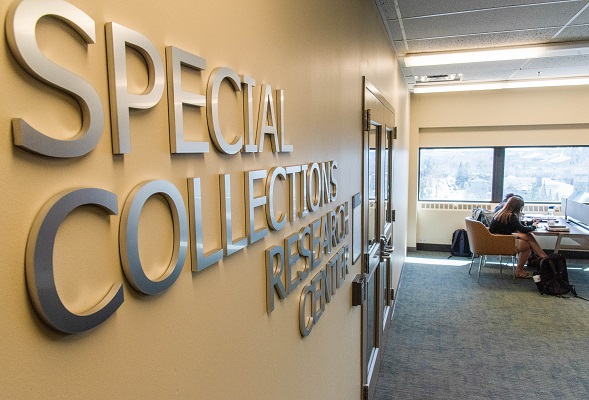The Gregory M. Franzwa Lincoln Highway Papers consist of correspondence, publications, clippings, administrative papers, and audiovisual materials that not only discuss the inner workings of the Lincoln Highway Association that Franzwa helped spearhead in 1992 but also showcase the legacy of the historic interstate.
The Gregory M. Franzwa Lincoln Highway Papers, donated by Franzwa's widow, Kathy, on June 26, 2015, is a compilation of correspondence, administrative documents, guides, articles, photographs, and audiovisual materials that deal with the running of the Lincoln Highway Association as well as with the history, sites, and legacy associated with the highway itself.
Correspondence: In this series, there are letters and emails arranged chronologically about a variety of subjects including: the publication of Franzwa's books, the formation and functioning of the Lincoln Highway Association, conventions, and information related to the history of the interstate. Some are the most frequent correspondents that appear in this collection are: Bob and Joyce Ausberger, Rob Bauer, Earl W. Givens, Brian Butko, Lawrence R. Eno, Randall A. Wagner, and Esther M. Oyster. Each of these individuals played a role in the management of the organization. Many of the earlier documents in this section deal with the construction of the Lincoln Highway and are photocopies of the originals.
Lincoln Highway Association Administration: The documents in this series relate to the operation of the Lincoln Highway Association. Located first within this section are the membership rosters that are organized by date. There are two rosters from 1992 that contain slightly different information and are separated from the other booklets due to their rarity, fragile condition, and abundant annotations. Following the rosters are the papers of the organization that are arranged chronologically. The types of materials included in the papers are: participant lists, bylaws, mission statements, reports to the board, position descriptions, invitations to events, financial records, meeting notes, and internal communication. There are also awards presented by the Lincoln Highway Association to chapters of the organization as well as to individual members. The Lifetime Membership Awards are arranged alphabetically by last name while all the other certificates are organized chronologically.
Guides: This section consists of brochures, educational materials, information about landmarks along the Lincoln highway, maps, tours, and travel guides. Both the brochures and the maps are alphabetically organized by state while the travel guides are arranged alphabetically. The travel guides from the beginning of the twentieth century are photocopies of the originals. Though many topics appear in this series, Iowa is particularly well represented.
Journals and Clippings: This series is comprised of seventeen journals, arranged chronologically, that contain articles that either mention the activities of the Lincoln Highway Association directly or discuss themes with which this organization contends. There are also clippings that include newspaper articles, periodical pages, and short narratives organized according to date. The older documents in this section have either been printed out or photocopied.
Photographs: In this section, there are seventeen folders of photographs, negatives, film strips, transparencies, and printouts that are predominantly arranged according to chronology. These pictures document landmarks and scenery alongside the Lincoln Highway, Lincoln Highway Association trips and gathering such as the 1992 foundation meeting in Ogden, Iowa, and reproductions of historic images. On the back of many of the sheets of negatives, there is a list detailing the sites depicted along with a date.
Slides: The slides contain images of Lincoln Highway Association members, landmarks and scenery, and reproductions of photographs that had been taken in the early days of the Lincoln Highway's history. Franzwa used these slides, which arrived in carrousels but have since been removed from their initial housing for storage concerns, in presentations about the Lincoln Highway. They have been kept in their original groupings. While some written components to these slideshows are included with the slides, there is also a folder of other scripts as well as introductory information about Franzwa himself.
Audiovisual: The audiovisual materials consist of cassette tapes and digital media. The cassettes contend with topics like: Iowa's relationship with the Lincoln Highway, Utah, and Franzwa's notes on various historic societies. The digital media sub-series is comprised of CDs that contain images of the Lincoln Highway and individuals affiliated with the Lincoln Highway Association. Two of the CDs are pictures that accompany tours, and the PowerPoint is a conglomeration of Edward A. Holden's 1915 expedition.
